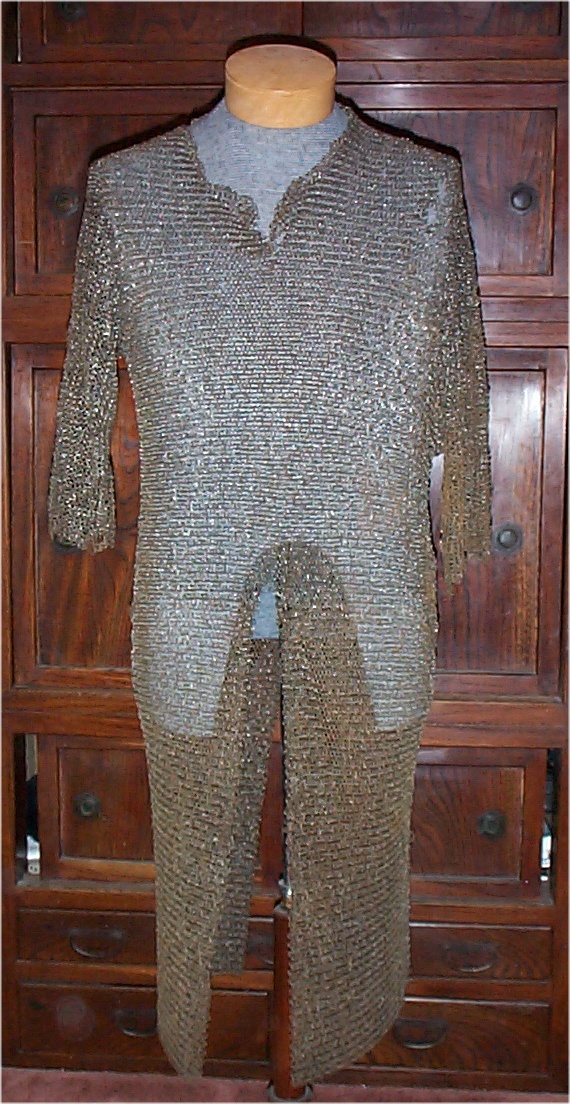


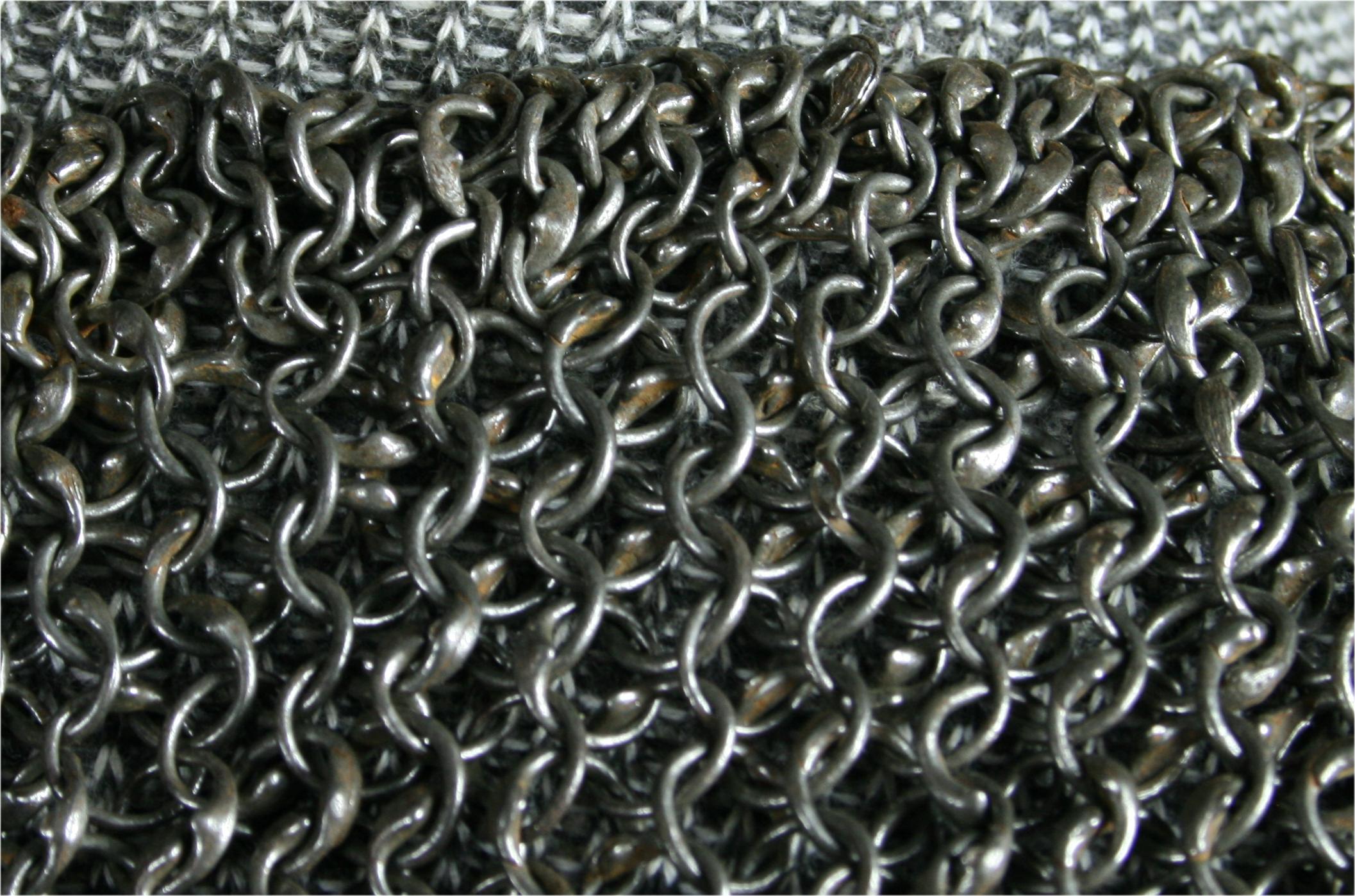
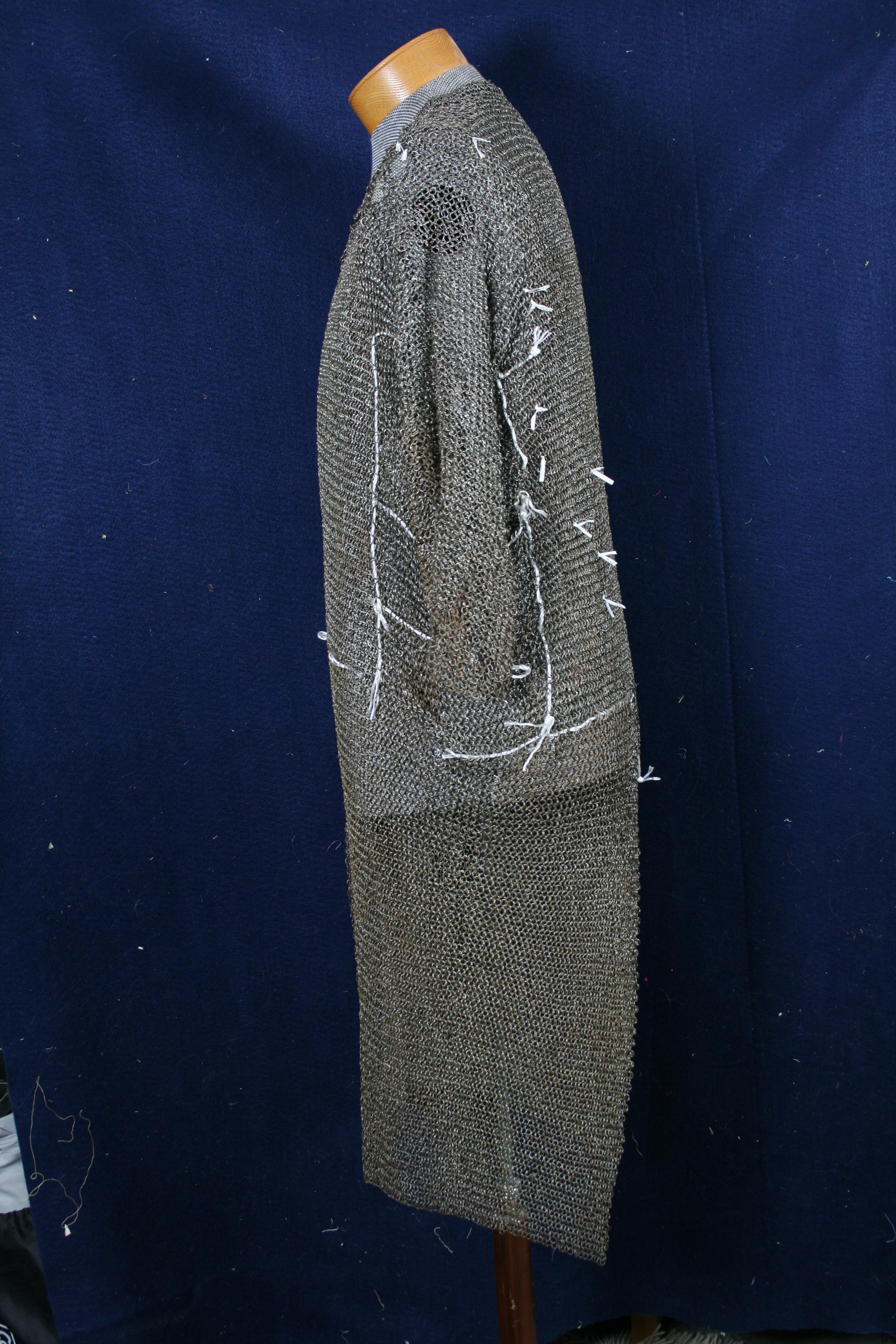
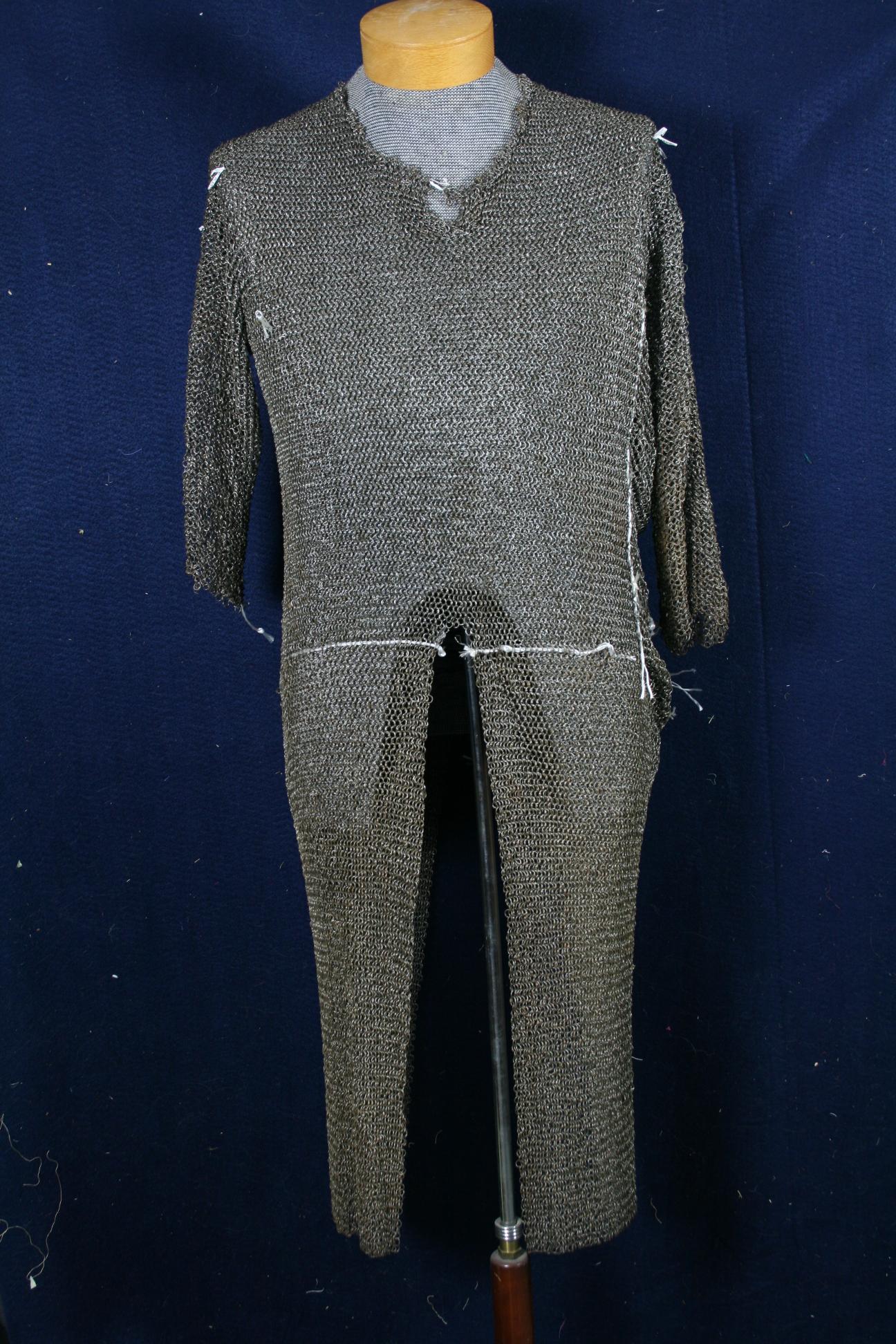


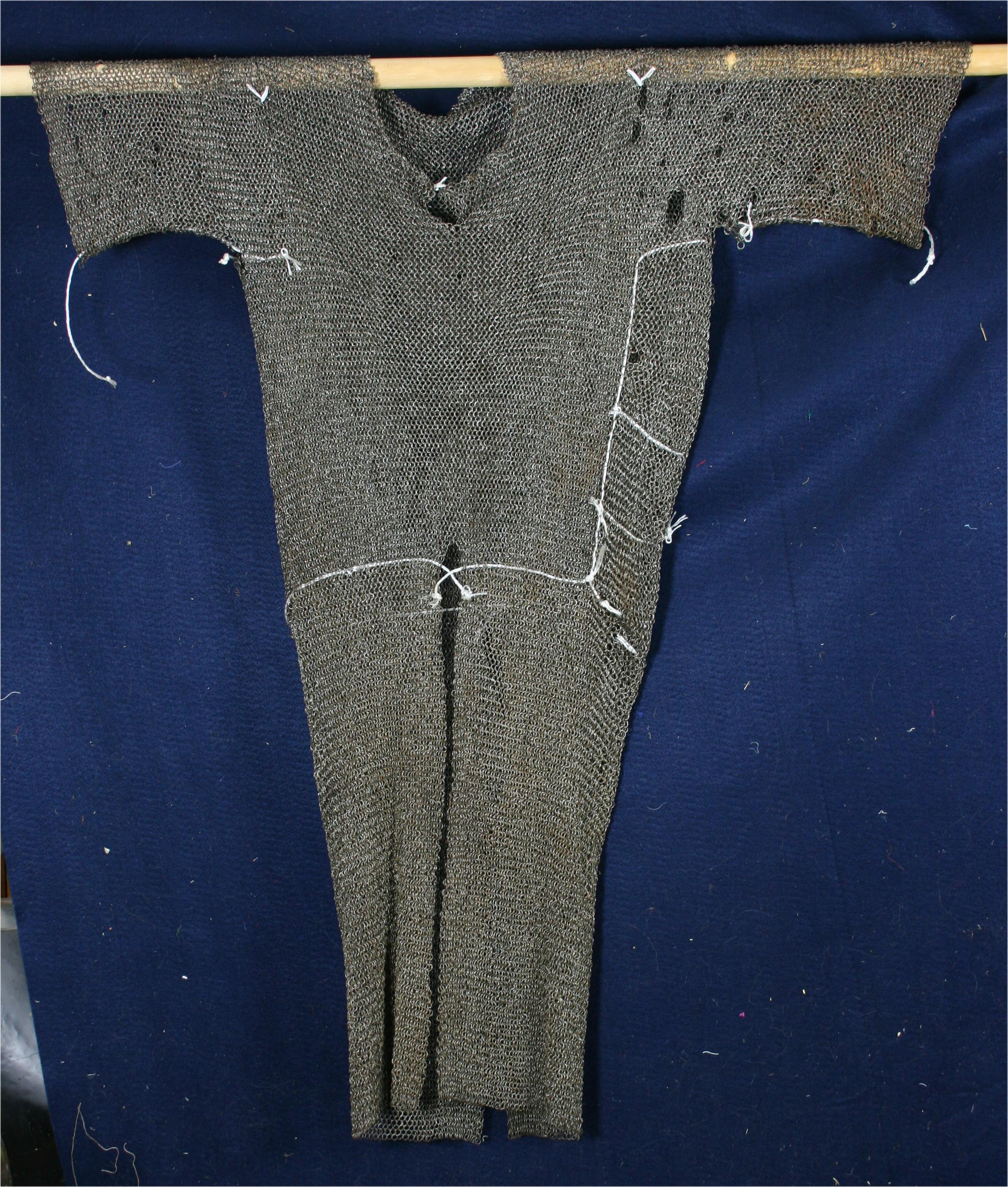

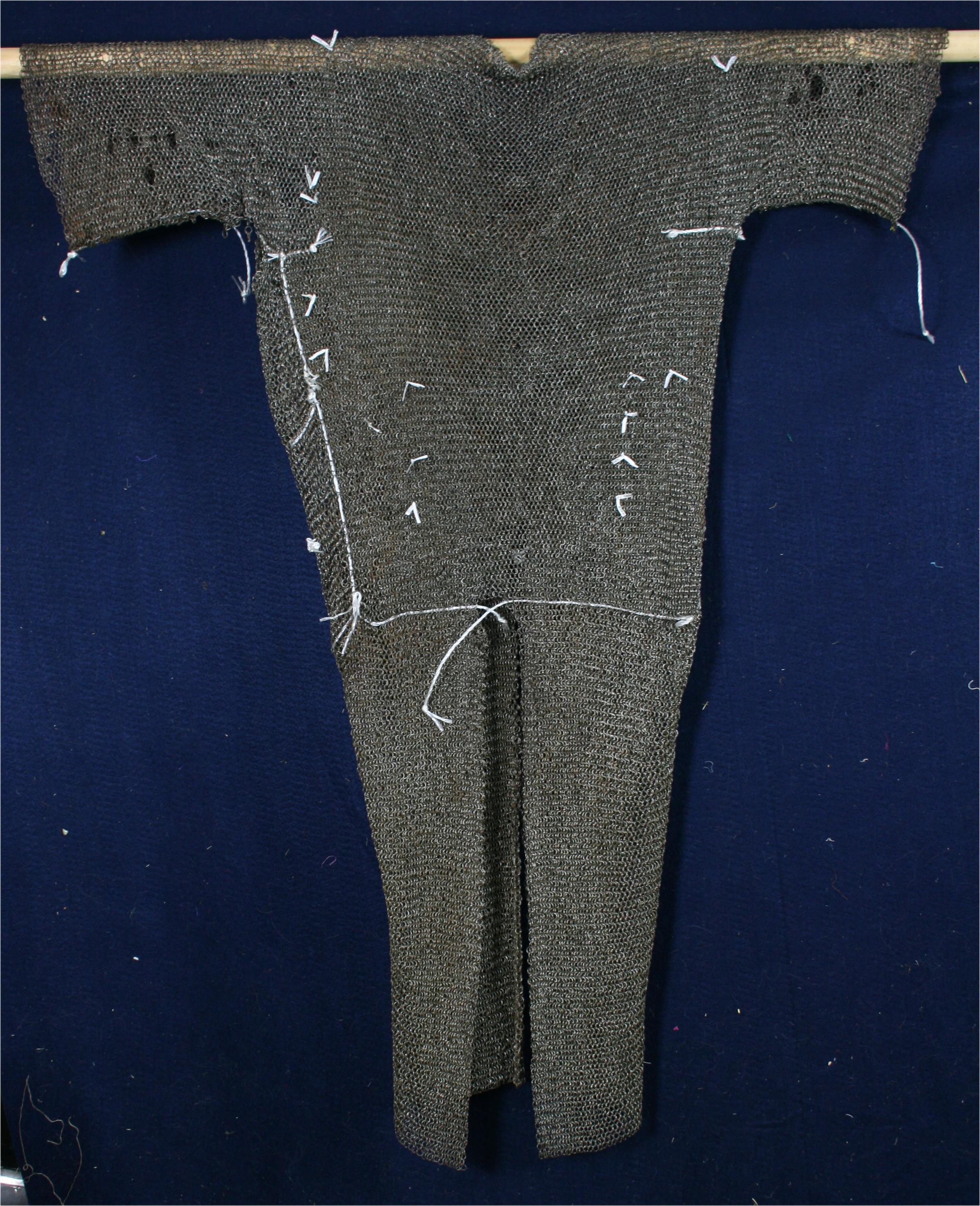

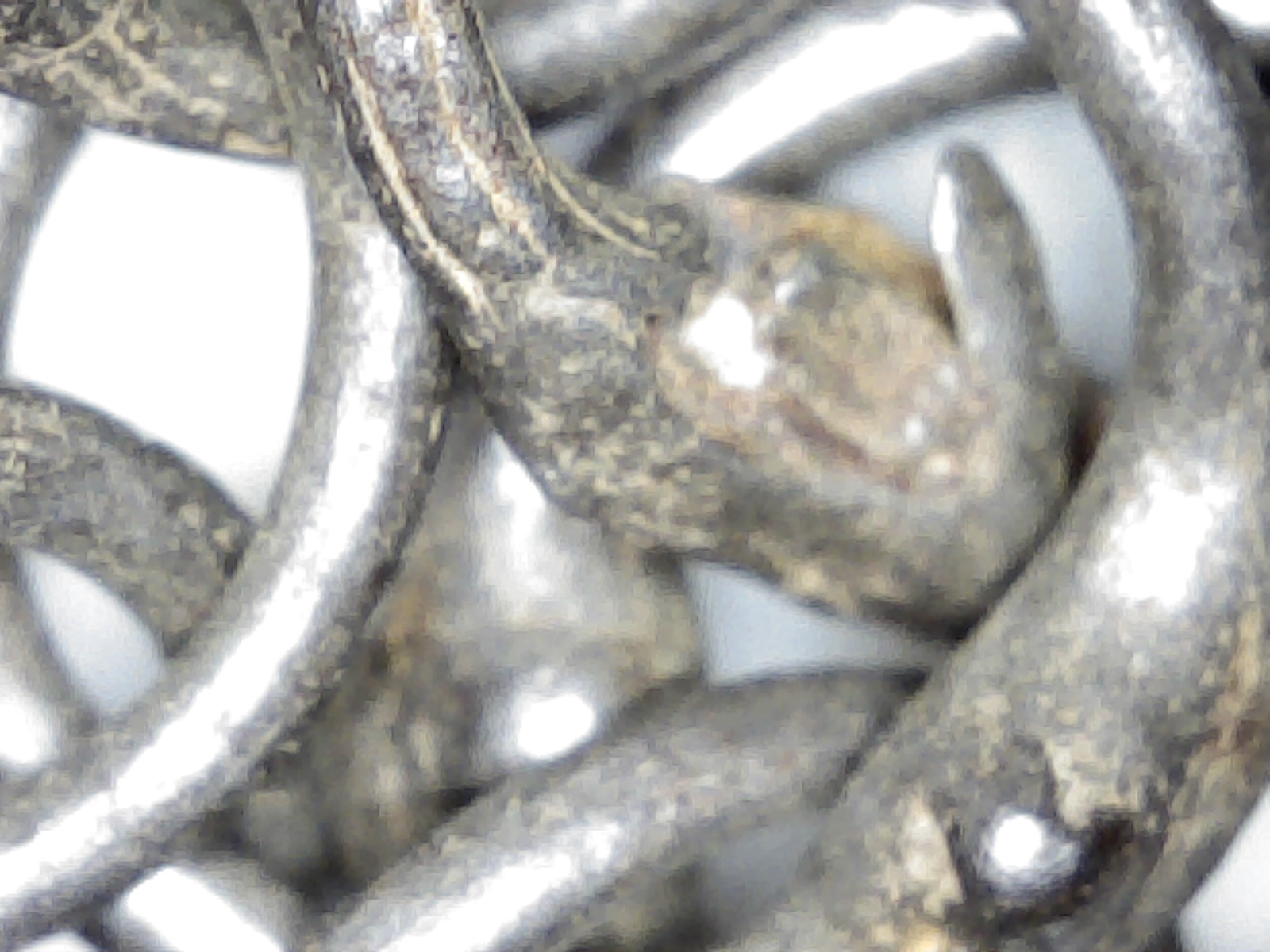



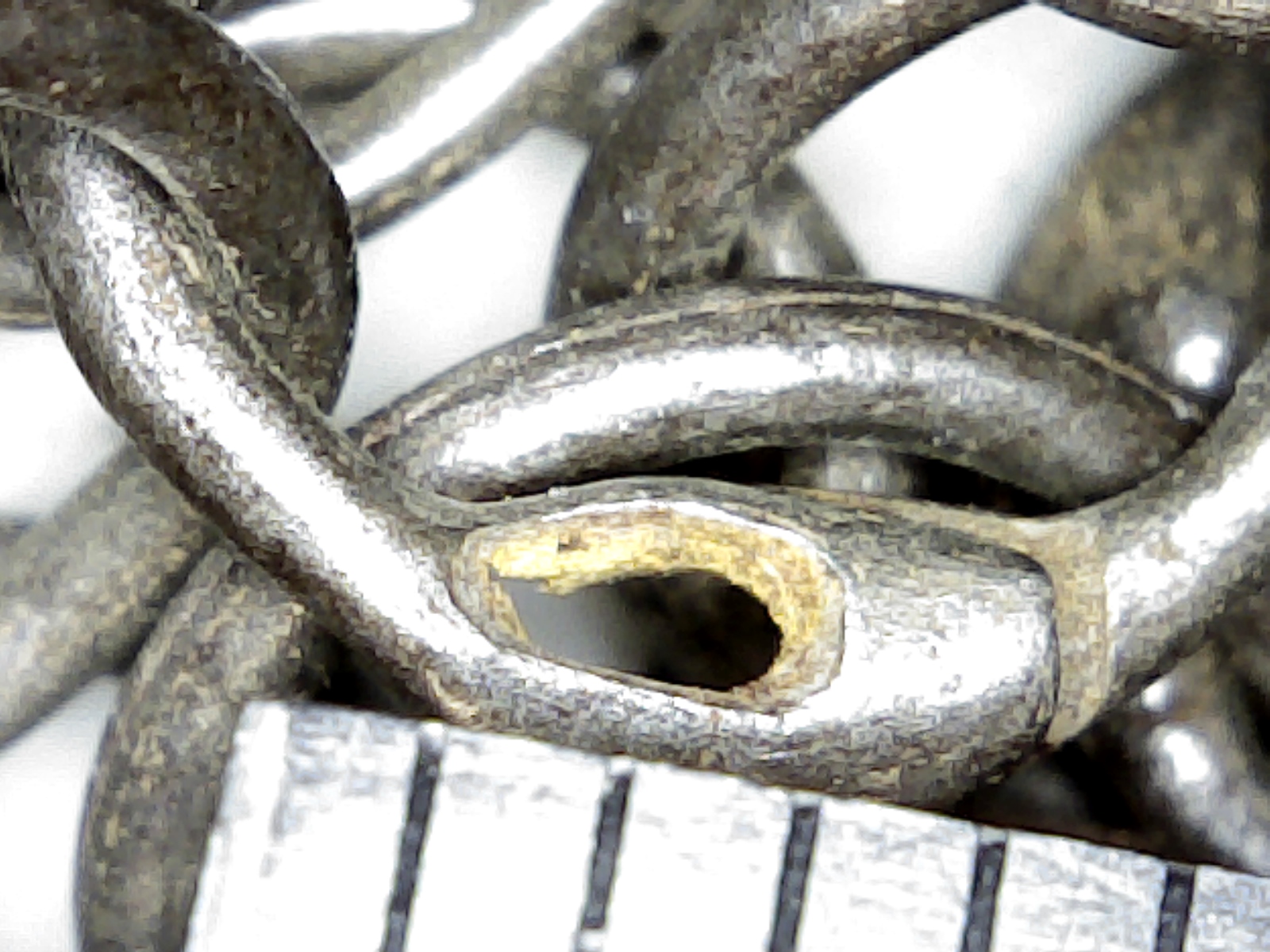


Mail shirt 16th-17th c.
The form of the rings is similar to 15th c. and earlier European items. The rings are roughly round with a swell at the rivet overlap that is rounded at the back and rises to a low point at the front. The form of the shirt is atypically long for this period. Small rings (averaging 6 rings in the body of the shirt yeilds an outside diameter of 7.5 mm and 1.07 mm wire) of round cross section. Overlaps heavily swelled and rivets set flush to ring surface. The torn rings show clearly that the rivets were wedge shaped. 44 inches long. Neck opening includes a small slit in the front where there is overlapped mail. This overlaps right over left. The body is pieced using larger rings. The placement of these is marked using string. Expansion rings are marked with V shaped ties. There were probably originally more expansion rings on the right side, where there are currently losses. Some of the larger rings are probably also missing as their line overlaps losses. There are also what appear to be a number of repair rings. These are formed of round wire where the ends of the wire overlap and one is bumped over the other as a simple catch. Erik D. Schmid has commented that the main fabric rings appear to be unremarkable - like late 14th c. or early 15th c. with a suggestion that they are Milanese in origin. This is somewhat later than the form would suggest, but still European and medieval. Further discussion indicates that this is probably a shirt made in Milan for export use in the Turkish or Mamiluk market. The form is most similar to a large number of shirts that survive in the Topkapi Palace armory in Istanbul.
Details
Weight 16 pounds 3.6 ounces.
If you have any questions, please send them to Wade Allen
This site last updated Wed Apr 13 19:23:18 EDT 2022